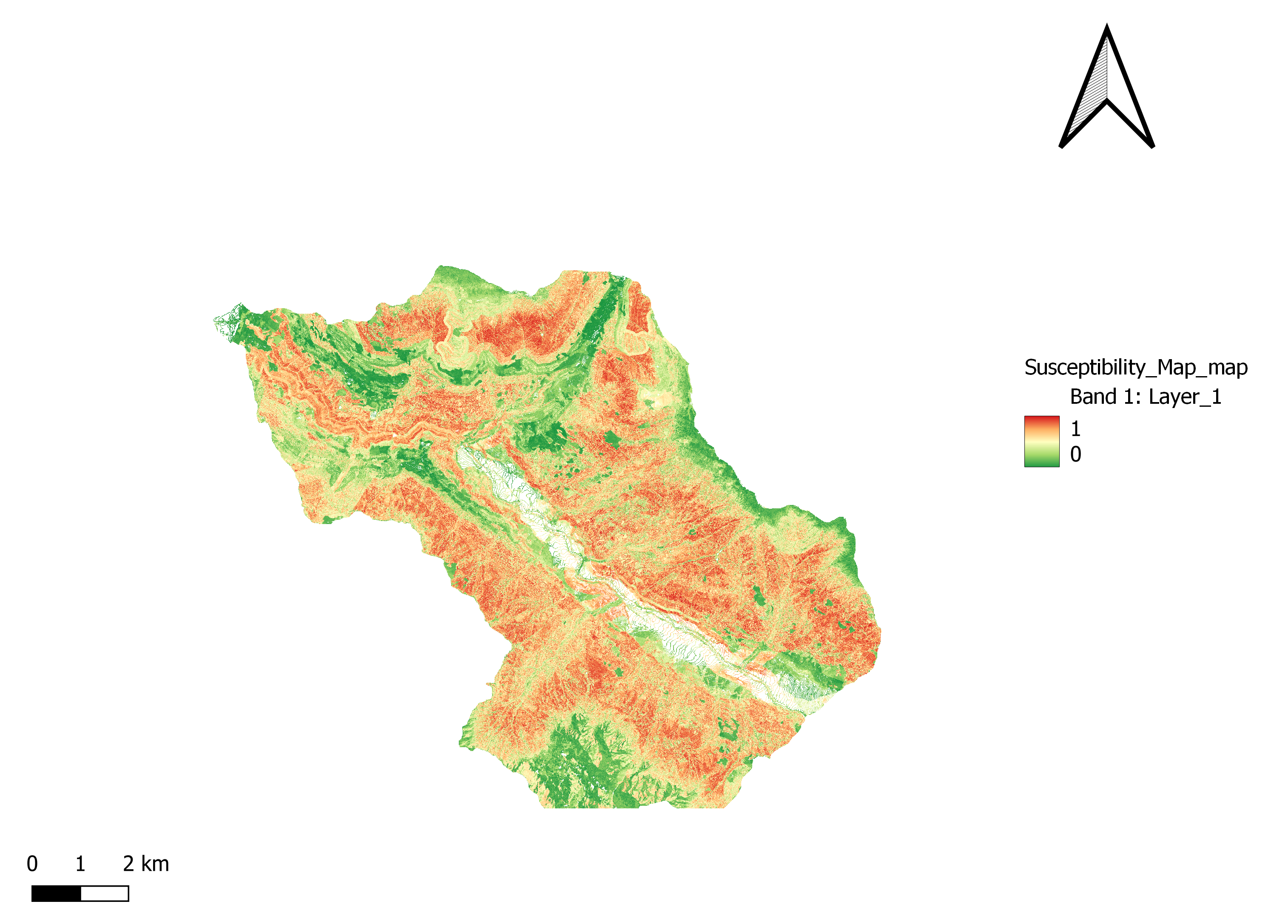Our Results
Analysis of the east region of Lake Como through Landslide Susceptibility Mapping

From the map we can see that the level of landslide risk is greater on the sides of the river in the center of the area, and decreases instead on the boundaries of the analyzed area as the distance from the river banks increases.
This can happen because riverbanks are often subject to erosion, which can weaken the soil and make it more susceptible to landslides; in addition, the infiltration of water into the soil makes it less cohesive and therefore less resilient.
The error matrix that we have obtained from the validation procedure is the following:

The overall accuracy (OA), represents the proportion of correctly classified pixels out of the total number of pixels assumes the value of 0.77. This accuracy corresponds a sufficiently high level of reliability in the results of the susceptibility map.
Producer’s accuracy (PA) of a class is probability that the class present on the ground is also captured by the classification in the thematic raster. The model has a high accuracy (0.95) in predicting Class 0 instances and a relatively lower accuracy (0.61) in predicting Class 1 instances. This suggests that the model is more accurate in identifying instances belonging to Class 0 compared to Class 1.
User’s accuracy (UA) of a class shows how often a user of classified map can expect to find the class on the ground. The model has a higher accuracy (0.93) in predicting Class 1 instances compared to Class 0 (0.68). It implies that when the model predicts an instance as Class 1, it is more likely to be correct (93% of the time), while the accuracy is relatively lower (68%) when the model predicts an instance as Class 0.